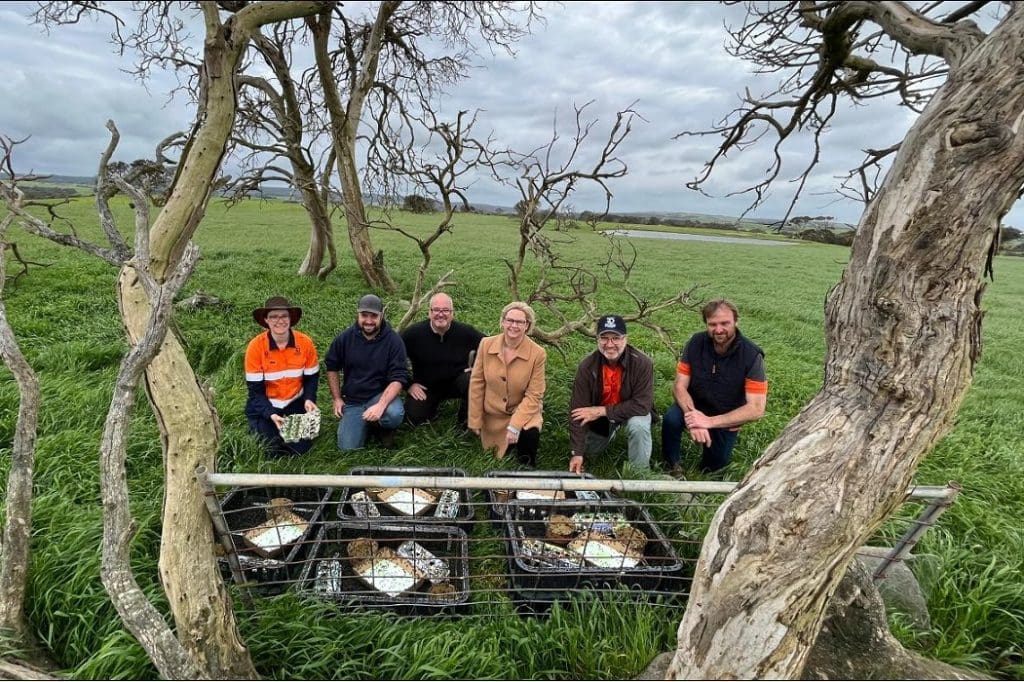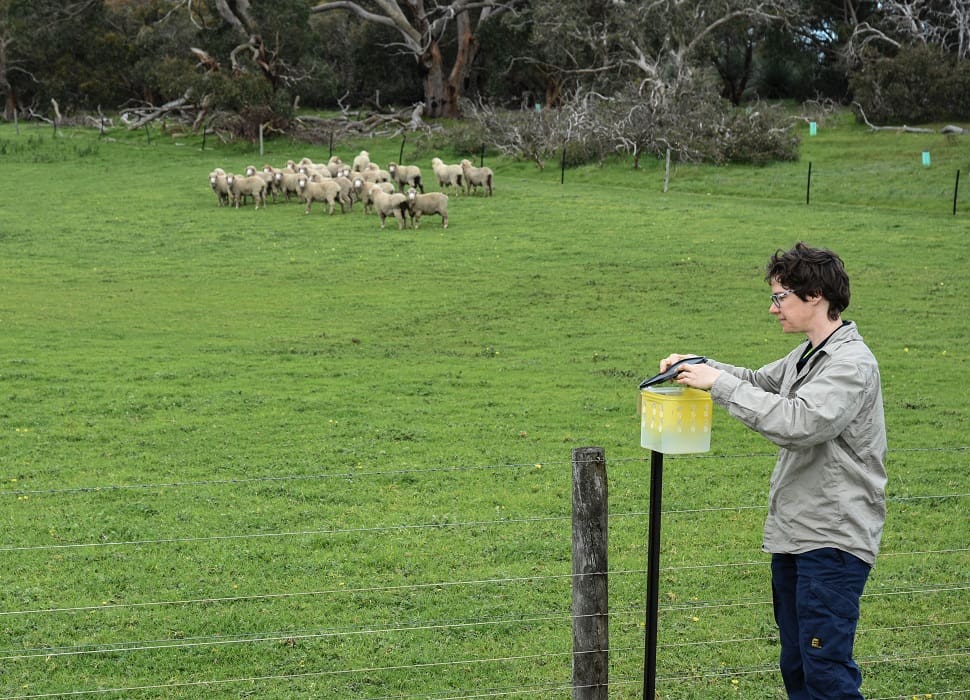
SARDI staff and SA Minister for Primary Industries Clare Scriven at a sterile blowfly release this month. Image – Facebook.
A PLAN to rid Kangaroo Island of the sheep blowfly within five years could be the precursor to a wider program across Australia.
South Australian Research and Development Institute researcher Maarten van Helden said the world-first dedicated sterile blowfly breeding facility on the island would be scaled up over the next 12 months.
A brownfield site will be transformed into a state-of-the-art insect breeding centre on the island, at which up to 50 million flies a week will be bred and irradiated to be sterile before release.
The facility will be built from shipping containers located at the Kangaroo Island Resource Recovery Centre and operational by mid-2023. It will and will be in place for up to five years, after which it could be deployed elsewhere within South Australia to continue the program.
By releasing sterile flies to compete with their natural fertile counterparts, it is expected the fly – Lucilia cuprina – could be eliminated from the island within a 3-4 year timeframe, Dr van Helden said.
The results from the $3.45 million Kangaroo island project would then be used to expand operations nationally.
“Yes, that is the idea, to continue on the mainland — of course on the mainland you can’t really eradicate because there will always be flies coming in from areas that you aren’t treating.”
There have been some experimental releases of sterile flies to gather information on fly longevity and migration, with bigger releases over a larger area in Spring 2024.
Kangaroo Island’s isolation makes eradication possible

SARDI entomologist Helen Brodie checking a fly monitoring trap. Image – SARDI.
Dr van Helden said the KI work would provide the answers to questions like how quickly can flies be eradicated from an area, how long will it take for fertile flies to reinfest a treated area and when would a treated area need to be retreated.
“These kinds of questions are scientific questions for which we don’t have the answers to yet.”
Dr van Helden said the same technique to be applied on Kangaroo Island is the same method that has kept South Australia free of fruit flies, apart from occasional incursions.
“Kangaroo Island we think is far enough from the mainland that flies cannot come in by themselves, that’s why we think we can eradicate them.”
Dr van Helden said it would be impossible to cover Australia in sterile flies in a year.
“It would have to be area by area.”
He said there had been work done in the southern United States and Mexico to eradicate the screw worm fly and push it southwards to Panama by releasing billions of sterile flies. CSIRO has also trialled sterile blowfly releases in Australia, but these flies had not been strong enough to compete with flies in the field, Dr van Helden said.
He is confident that SARDI can now rear a stronger strain of blowfly at a lower cost.
“We’ve actually gone back to the basics, we are usually a normal wild fly strain that is sterilised that should be well-adapted.
“We’re not trying to induce sterility inside the wild population, we will just have our sterile males mating with the wild females.”
This results in female blowflies not being able to lay eggs. Adult flies can live for several months. Dr van Helden said regular releases will build up numbers of sterile flies over time, increasing efficiency.
“We would probably release up to 10 times in Spring.”
Dr van Helden said expansion of the program beyond Kangaroo Island will depend on the KI results, industry and government and available funding. Potential areas would be those having a high concentration of sheep, including south-east South Australia, the Yorke Peninsula, Tasmania or Western Australia.
A report published for Meat & Livestock Australia in 2021 found that Australia had the capacity to upscale mass rearing of sterile males in 1-2 years using existing knowledge and facilities for areas of 2000-5000km2, eg. Kangaroo Island. After upscaling, the sheep blowfly could be eradicated in 3-4 years for an estimated $5-6m, including establishment of a facility that could later be repurposed, the report concluded.
The report said the sterile insect technique is also used successfully against sheep blowfly in Bangladesh. Flystrike infestations can cost the industry up to $173m annually in stock loss, productivity loss, and control measures. These losses can be potentially mitigated by reducing sheep blowfly numbers through the SIT, the report said.

Interesting example of how, by repeating a falsehood or half-truth often enough, it eventually becomes accepted as gospel. The sterile male technique worked against isolated populations of New World screw worm fly in America and fruit flies in South Australia, and could very well succeed against sheep blowfly on Kangaroo Island, but its roll-out across the Australian mainland is universally met with scepticism by veterinary entomologists. Interesting also that the MLA-funded project B.AHE.0261 in 2021 that gave the thumbs-up to the concept, was performed by almost the same people now running the KI project. Is this a reverse of what is called “marking one’s own homework”?